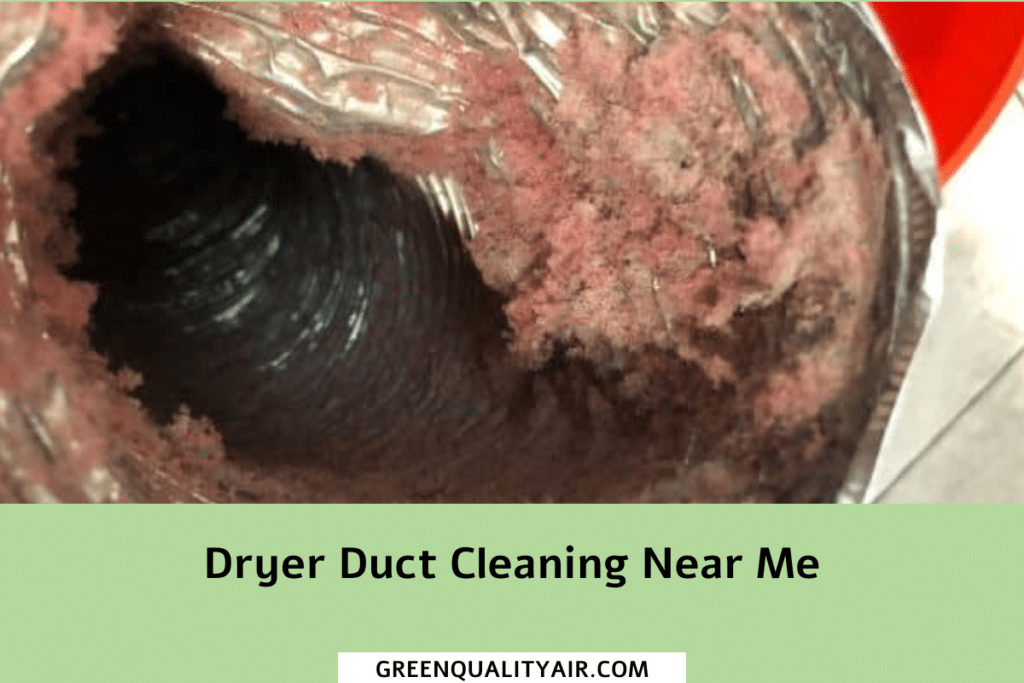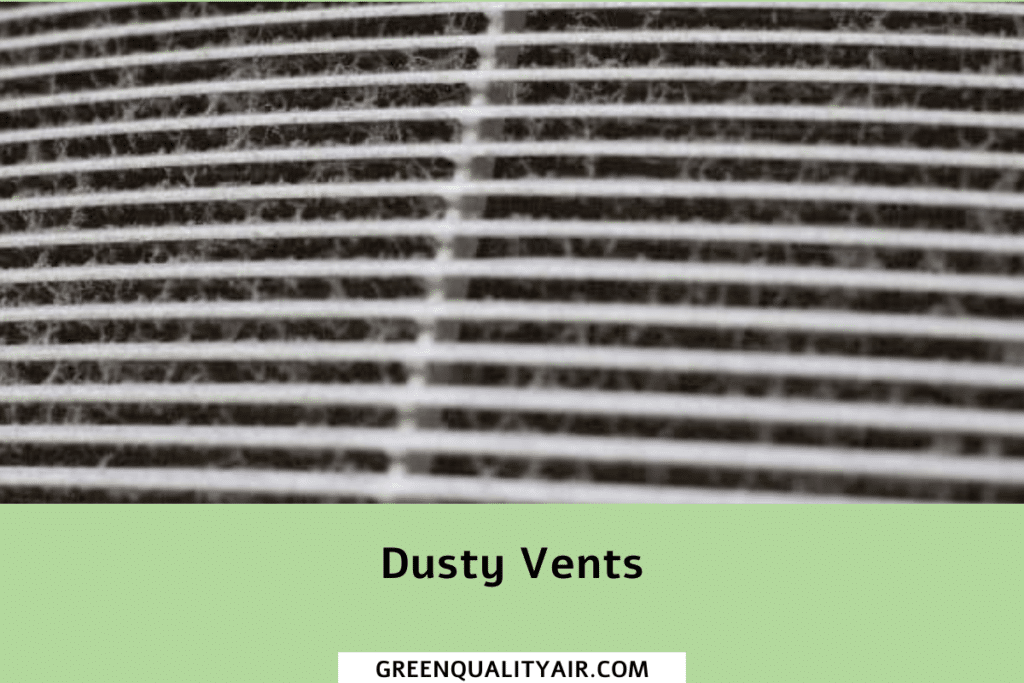Do the air vents in your home give off a distinctive musty smell, even after you’ve cleaned them? Have you been wondering what’s causing that odor and if it could be dangerous to your family’s health? It’s possible that mildew is growing on them.
In this blog post, we will discuss why mildew grows on air vents, how harmful it can be to both people and property, and where to go for relief if you are dealing with this issue. If you’re concerned about the safety of having mildew in your home, then keep reading!
Understand the Causes of Mildew on Air Vents
Mildew on air vents is not only unsightly, but it can also be a potential health hazard. It’s important to understand the causes behind this pesky problem in order to prevent it from happening in the future.
One possible culprit is moisture. In humid environments, condensation can form on the air vents, providing a breeding ground for mold and mildew. Another factor is inadequate ventilation. Poor airflow through the vents can allow moisture to accumulate, leading to the growth of mildew.
Regular cleaning and maintenance of the air ducts can help reduce the occurrence of mildew on air vents. By taking preventative measures, you can avoid the inconvenience and potential health risks of mildew growth in your home.
Contact Us
Identify Signs of Mildew Infestation
Mildew on air vents can be a clear indication of an infestation in your home. It’s not only unsightly, but it can also cause major respiratory issues for you and your family. One of the first telltale signs of mildew is a musty, damp odor in the room where the vents are located.
You might also notice dark spots, or even a visible growth, on and around the vents themselves. It’s important to take action as soon as possible to prevent the spread of mildew throughout your home. With proper ventilation and cleaning, you can eliminate mildew and ensure a healthy living environment for everyone in your household.
Learn How to Properly Clean and Disinfect the Air Vents
The last thing anyone wants is to be breathing in air contaminated with mold and mildew. Unfortunately, that can happen if the air vents in your home aren’t being regularly cleaned and disinfected.
Not only can this lead to poor air quality and potential health issues, but it can also cause your HVAC system to work harder and less efficiently. Learning how to properly clean and disinfect your air vents can make a huge difference in both the health of your home and your wallet.
So, how can you tackle the problem of mildew on air vents? By using the right tools and products to clean and disinfect them thoroughly and regularly.
More Articles

Earth-Friendly Air Duct Cleaning: Sustainable Solutions for Clean, Healthy Air

Green Vent Cleaning – A Comprehensive Guide to Sustainable and Effective Ventilation Maintenance

Breathe Easy with Green Air Duct Cleaning Solutions

Earth-Friendly Air Duct Cleaning: Sustainable Solutions for Clean, Healthy Air

Green Vent Cleaning – A Comprehensive Guide to Sustainable and Effective Ventilation Maintenance

Breathe Easy with Green Air Duct Cleaning Solutions
Preventative Measures to Help Stop Mildew from Growing
Mildew can be a pesky problem to deal with and can easily grow on various surfaces in your home. One area where mildew can often be found is on air vents. To help prevent mildew from growing on your air vents, it’s important to properly maintain them.
This includes regularly cleaning them with a mild detergent, wiping them down with a dry cloth, and making sure they are properly ventilated. Additionally, it’s important to monitor the humidity levels in your home, as high humidity can promote mildew growth.
By taking these preventative measures, you can help stop mildew from taking over your air vents and keep the air in your home clean and healthy.

Common Mistakes That Can Make a Mildew Problem Worse
Mildew On Air Vents can be a frustrating problem to deal with. It’s important to know that certain mistakes can actually make the problem worse. One common mistake is failing to identify the root cause of the mildew, such as excessively high humidity levels or a leaky pipe.
Another mistake is not properly cleaning the affected area, as mildew can spread rapidly if left to its own devices. Lastly, using harsh chemicals or bleach to clean mildew can actually lead to further damage and growth in the long run.
By avoiding these common mistakes, you can tackle the mildew on your air vents and prevent it from causing further issues in your home.
DIY Alternatives for Safely Removing Mold and Mildew From Your Home’s Air Vents
Mildew on air vents can be a frustrating problem for homeowners. Not only does it give your home an unpleasant musty smell, but it can also be a health hazard if left untreated. While hiring a professional to remove mold and mildew from your air vents may be the easiest option, it can also be expensive.
Luckily, there are DIY alternatives that can save you money and safely remove mold and mildew from your home’s air vents. By using natural, non-toxic ingredients like vinegar, baking soda, and essential oils, you can effectively clean and deodorize your air vents without harming your family or the environment. With a little bit of elbow grease and some patience, you can breathe easy knowing that your air vents are free from harmful mold and mildew.
In conclusion, proper maintenance of your air vents is paramount for keeping unwanted mildew out of your home. Be sure to regularly inspect the air vents and clean them as needed with an EPA-registered disinfectant. Additionally, consider implementing a regular inspection schedule for your air ducts, such as every 6-12 months.
Taking proactive measures to ventilation system maintenance will help prevent mold growth and improve indoor air quality in the long run. If you’re looking for a DIY alternative, you can opt for using natural ingredients like baking soda and vinegar or tea tree oil when handling mildew around the house; however, if mold has already been discovered in the vents it’s best to call in a professional.
Make sure to take action now before bits of that unwanted mildew become airborne and pollute your home!
Mildew On Air Vents FAQ
What are the health risks of inhaling mildew spores from air vents?
Inhaling mildew spores can cause a range of health problems. People with respiratory conditions like asthma, COPD, or allergies may experience more severe reactions, including shortness of breath, chest tightness, or worsening asthma symptoms. For healthy individuals, exposure may result in sneezing, coughing, and throat irritation. Prolonged exposure can lead to more serious conditions such as sinus infections, eye irritation, or even lung infections in immunocompromised individuals. It’s particularly dangerous for young children, elderly people, and pregnant women.
How do moisture problems lead to mildew on air vents?
Mildew thrives in environments with excessive moisture, and air vents can become a breeding ground if moisture problems are present. Sources of excess moisture include high humidity levels, leaking pipes, or improperly sealed windows that allow rainwater to enter the air duct system. If the HVAC system is running in these damp conditions, it can spread the moisture throughout the system, causing mildew to grow. This is why controlling indoor humidity levels and ensuring that your home is free from leaks or water damage is critical to preventing mildew buildup.
Can regular HVAC maintenance help prevent mildew on air vents?
Yes, regular HVAC maintenance is essential in preventing mildew on air vents. Scheduling routine inspections and cleanings helps ensure that your system is running efficiently and free from debris, which can contribute to moisture buildup. During maintenance, professionals will check the ductwork for leaks, clean filters, and make sure there’s proper airflow. By keeping the HVAC system in good condition, you reduce the likelihood of creating a damp environment in the ducts, which is ideal for mildew growth.
What is the best humidity level to prevent mildew on air vents?
To prevent mildew growth on air vents, it’s important to maintain indoor humidity levels between 30% and 50%. Levels above 50% create the perfect breeding ground for mold and mildew, while levels below 30% can make the air too dry, which can lead to other issues like static electricity and respiratory discomfort. Using a hygrometer to monitor humidity levels and a dehumidifier to control moisture in areas like basements, bathrooms, and kitchens can help maintain the ideal humidity level and prevent mildew growth.
How do I know if the mildew is in my air ducts or just on the vents?
To determine if the mildew is inside the ducts or just on the vents, start by inspecting the vent covers and the surrounding area for visible signs of mildew or moisture. If the smell of mildew is coming from multiple vents or throughout the house, it’s likely that the mildew has spread inside the ducts. You can also remove the vent covers and use a flashlight to inspect inside the ducts for any visible signs of mold or mildew growth. If you’re unsure, it’s best to call a professional who can perform a full inspection and determine the extent of the mildew problem.
How often should I clean my air vents to prevent mildew buildup?
It’s a good idea to clean your air vents at least once a year, although more frequent cleaning may be necessary if you live in a humid environment or have had issues with moisture or mildew in the past. Regular cleaning helps ensure proper airflow, prevents dust and debris buildup, and reduces the chances of mold or mildew developing. If you notice any signs of mildew or unpleasant odors coming from your vents, it’s best to clean them immediately, even if it’s outside the usual schedule.
Can I use bleach to remove mildew on air vents?
While bleach can effectively kill mildew and mold on hard, non-porous surfaces, it’s not recommended for cleaning air vents or ducts. Bleach may not remove all the mildew spores from the ducts and could also cause damage to the HVAC system over time. Moreover, using bleach in the ducts may release harmful fumes into the air. It’s better to use vinegar, hydrogen peroxide, or a specialized cleaner designed for HVAC systems. For extensive mildew problems, it’s advisable to call a professional for thorough and safe cleaning.
How do I prevent mildew from coming back after cleaning my air vents?
To prevent mildew from returning after cleaning your air vents, it’s essential to address the underlying causes of moisture buildup. Ensure that your home’s humidity levels are controlled, typically between 30% and 50%, and use a dehumidifier in high-moisture areas. Regularly replace HVAC filters and perform routine inspections of your air ducts for leaks or water damage. Consider installing moisture barriers or vent covers to prevent moisture from entering the system. Additionally, schedule annual professional HVAC cleanings to keep your system free of mildew and mold.





